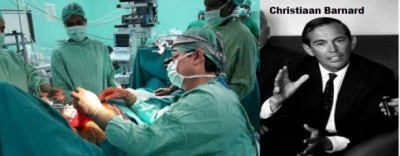
In a heart transplant procedure, a surgeon removes the diseased heart of a person and replaces it with a donor heart. It is used to treat the most serious cases and as an option for people in the final stages of heart failure.
This sort of surgery was unimaginable till the beginning of the 20th century. It was only the invention of the heart-lung bypass machine by John Gibbon, in 1953 that made such a procedure possible. In 1967, for the first time, a human heart from one person was transplanted into another by a surgeon named Christiaan Barnard in Cape Town, South Africa.
Dr Barnard’s team removed the heart of a 25-year-old woman, who had died following an auto accident, and placed it in the chest of Louis Washkansky, a 55-year-old man dying of heart damage. The surgery was the first of its kind and the patient survived for 18 days on the borrowed heart.
In the 1970s, with the development of better anti-rejection drugs, heart transplantation became more viable and by the late 1970s patients were living up to five years with their new hearts. Today, new approaches to heart transplant surgery are being researched, but Barnard’s operation will always be remembered as a historic achievement in the field of medicine.
Picture Credit : Google




